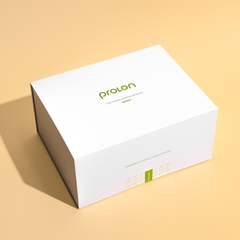
High-Fiber Diet vs. Fasting Mimicking Diet: Which Is Better for Weight Loss?
When it comes to weight loss, diet choices play a pivotal role in determining success. Among the many dietary approaches, the High-Fiber Diet and the Fasting Mimicking Diet (FMD) have emerged as popular options. Both focus on improving health while promoting weight loss, but which one is better suited for you? Let’s explore their mechanisms, benefits, and challenges to help you decide.
What Is a High-Fiber Diet?
A High-Fiber Diet emphasizes consuming foods rich in dietary fiber, which is a type of carbohydrate that the body cannot digest. Fiber is found in fruits, vegetables, whole grains, legumes, and nuts, and it plays a vital role in digestive health and weight management.
How a High-Fiber Diet Works
The High-Fiber Diet works by increasing the volume and bulk of food consumed without adding extra calories. Fiber slows down digestion, which helps you feel full for longer periods, reducing the likelihood of overeating. It also supports a healthy gut by feeding beneficial bacteria, improving nutrient absorption, and regulating bowel movements.
Health Benefits of a High-Fiber Diet
Including fiber-rich foods in your diet can offer several health benefits:
-
Weight Loss: Fiber creates a sense of fullness, reducing calorie intake and supporting sustainable weight loss.
-
Improved Digestion: Promotes regular bowel movements and prevents constipation.
-
Heart Health: Reduces cholesterol levels and lowers the risk of cardiovascular diseases.
-
Blood Sugar Control: Helps stabilize blood sugar levels by slowing carbohydrate digestion.
Challenges of a High-Fiber Diet
While the High-Fiber Diet offers numerous benefits, it can also present some challenges:
-
Digestive Discomfort: Rapidly increasing fiber intake may cause bloating, gas, or stomach discomfort.
-
Food Preparation: A high-fiber diet often requires more time for meal planning and preparation.
-
Taste Preferences: Some people find high-fiber foods less palatable, making adherence difficult.
-
Social Constraints: Dining out or attending events may limit fiber-rich options, especially in processed or fast-food settings.
What Is the Fasting Mimicking Diet?
The Fasting Mimicking Diet (FMD) is a short-term, low-calorie eating plan designed to mimic the effects of fasting. It triggers fasting-like benefits while allowing you to consume specific foods.
How the Fasting Mimicking Diet Works
During the five-day program, participants consume 750–1,100 calories per day through foods that stay under the nutrient-sensing pathways so the body still thinks it is fasting. This approach tricks the body into entering a fasting state, triggering mechanisms like fat burning and autophagy (cellular cleanup). Unlike traditional fasting, FMD ensures you still receive some nourishment, making it a safer and more manageable alternative.
Health Benefits of the Fasting Mimicking Diet
The FMD may deliver broad health benefits:
-
Fat-Focused Weight Loss: Supports fat burning while preserving muscle mass.
-
Cellular Rejuvenation: Aims to stimulate autophagy, helping the body eliminate damaged cells and regenerate healthier ones.
-
Healthy Metabolic Markers: This program supports healthy metabolic markers, including blood sugar levels and insulin sensitivity.
-
Longevity Support: Offers healthy aging support; three consecutive monthly cycles were shown to reduce biological age score by 2.5 years.
Why FMD May Be Better for Weight Loss
The FMD can target fat loss while protecting muscle mass, making it effective for weight loss and its science-backed approach ensures fat loss without muscle depletion. This makes it an attractive choice for those seeking quick yet effective results.
Key Differences Between High-Fiber Diet and Fasting Mimicking Diet
While both diets aim to promote health and weight loss, they differ significantly in structure, duration, and benefits.
Flexibility and Ease of Use
-
High-Fiber Diet: Requires ongoing changes to daily eating habits and careful planning to maintain adequate fiber intake.
-
FMD: A short-term, structured program lasting only five days. It’s recommended to start with three consecutive monthly rounds, followed by just three cycles per year, making it less demanding in your daily life.
Weight Loss Approach
-
High-Fiber Diet: Focuses on increasing satiety through bulkier meals, which indirectly aids in weight loss.
-
FMD: Supports fat loss through triggering ketosis and cellular rejuvenation.
Health Impacts
-
High-Fiber Diet: Primarily benefits digestive and cardiovascular health while promoting gradual weight loss.
-
FMD: Supports comprehensive benefits, including healthy metabolic markers, cellular rejuvenation, and longevity.
Which Diet Is Right for You?
Selecting the best diet depends on your personal health goals and lifestyle preferences.
Consider Your Weight Loss Goals
-
If you’re looking for steady, long-term weight loss with a focus on digestive health, the High-Fiber Diet may be the better option.
-
If you want faster results with broader health benefits, the Fasting Mimicking Diet is a superior choice.
Assess Your Lifestyle Needs
-
For those who enjoy regular meals and can commit to ongoing dietary changes, the High-Fiber Diet fits well.
-
If you prefer a time-efficient, periodic program, the Fasting Mimicking Diet offers a practical and manageable solution.
Why Choose Prolon’s 5-Day Fasting Mimicking Diet?
Prolon’s 5-Day Fasting Mimicking Diet offers a convenient, scientifically-back way to achieve the benefits of fasting without fully abstaining from food.
Clinically Proven Results
Prolon is backed by clinical studies demonstrating its effectiveness in supporting fat-focused weight loss, healthy metabolic markers, and cellular rejuvenation.
Easy and Convenient
The pre-packaged meals and snacks in Prolon’s program make it simple to follow. There’s no need to plan, prep, or worry about nutritional balance—everything is provided to ensure success.
Conclusion: Making the Right Choice for Your Weight Loss Journey
Both the High-Fiber Diet and Fasting Mimicking Diet offer effective strategies for weight loss and health improvement. While the High-Fiber Diet is great for long-term digestive health, the Fasting Mimicking Diet provides faster results and more comprehensive health benefits. For those looking for a scientifically proven program with minimal effort, Prolon’s 5-Day FMD stands out as an excellent option.
References:
Dietary Fiber
https://www.betterhealth.vic.gov.au/health/healthyliving/fibre-in-food
Digestive health and weight management
Beneficial bacteria
Fiber can make you feel full
For bowel movement:
https://www.webmd.com/digestive-disorders/dietary-fiber-the-natural-solution-for-constipation
Lowers risk of cardiovascular disease:
Benefits of fasting:
https://www.healthline.com/nutrition/fasting-benefits
Backed by science
https://www.healthline.com/nutrition/fasting-mimicking-diet
FMD for fat loss
https://www.healthline.com/nutrition/fasting-mimicking-diet#potential-benefits
Anti-aging












